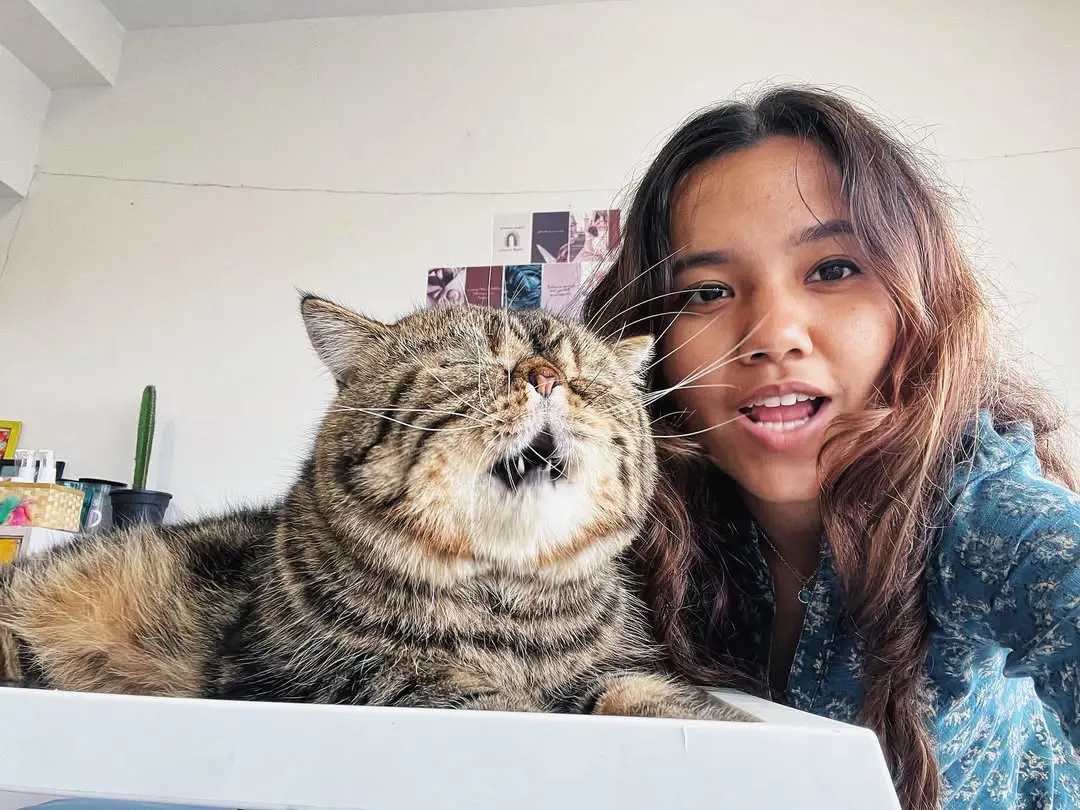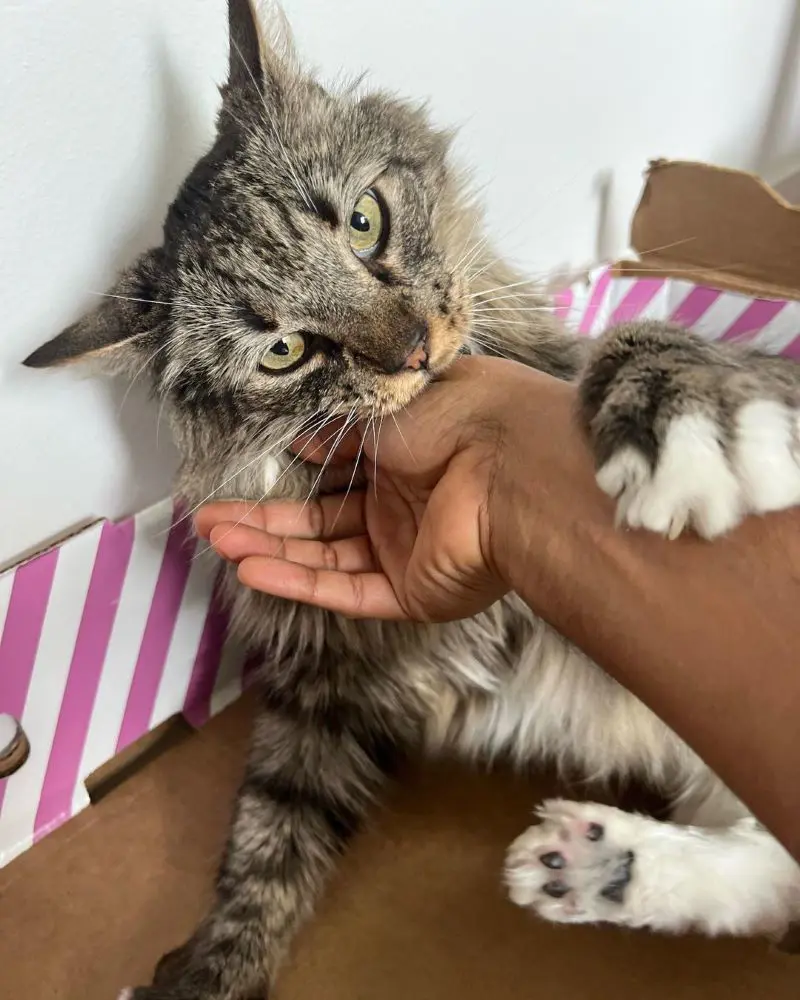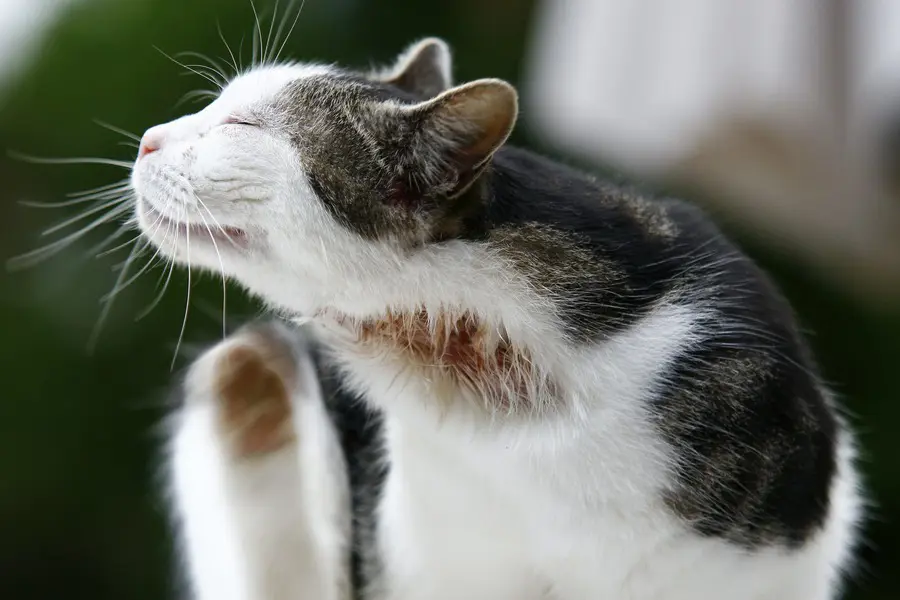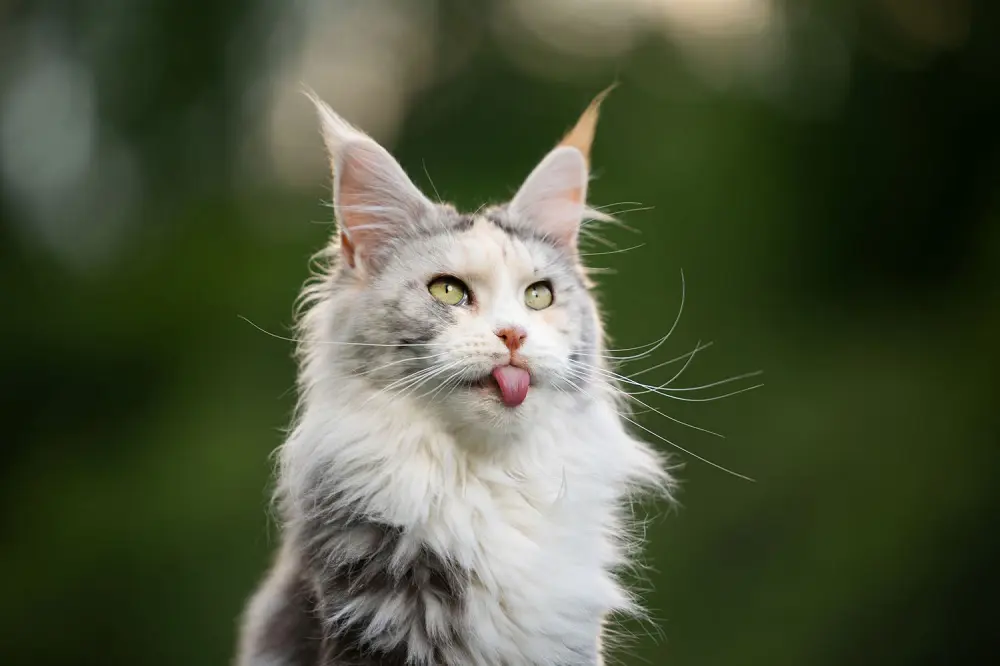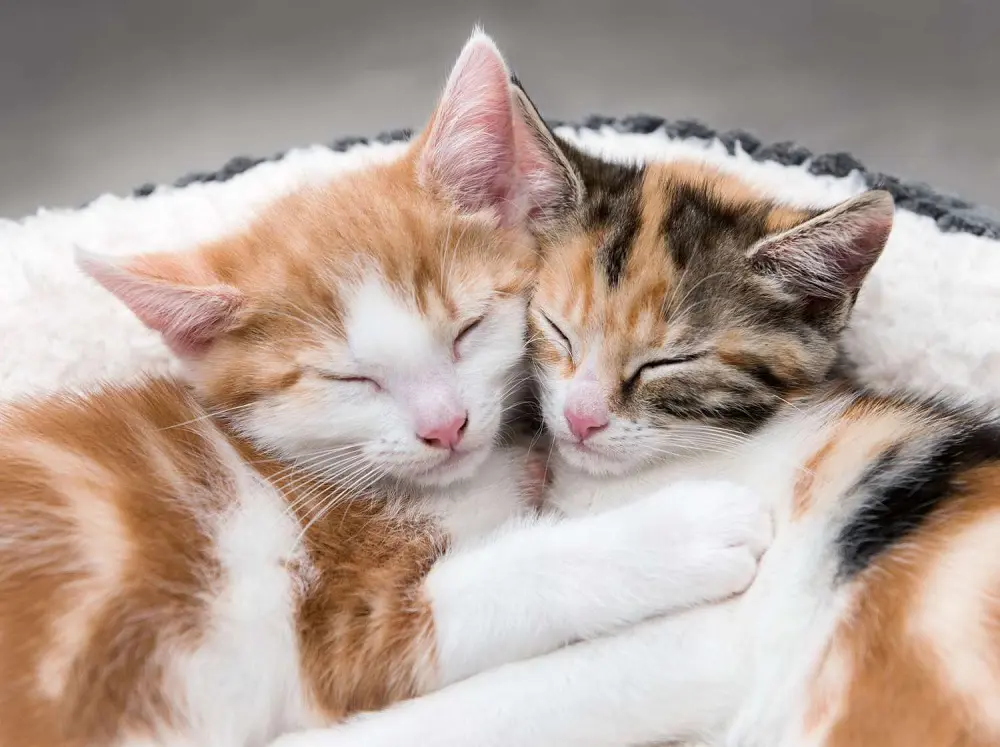How To Get Rid of Cat Pee Smell? 15 Useful Methods
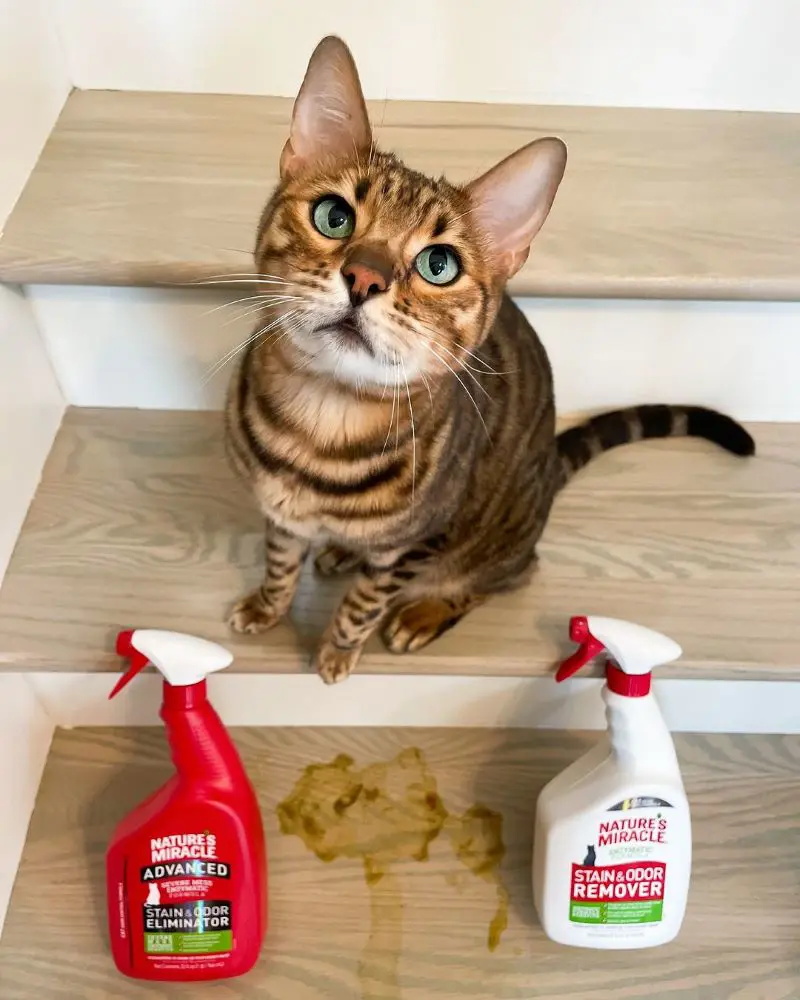
Getting rid of the cat pee smell can be challenging, but with the right approach, it’s manageable. Cat urine contains strong-smelling proteins and ammonia that can linger if not properly treated.
House cats are known to pee on carpets and household items for a variety of reasons, including territorial marking, stress, urinary tract infections, and discomfort with the litter box's cleanliness.
No matter the reason, pet owners are still left with the hefty task of getting rid of this foul order. However, with the right method, you can complete this task with relative ease. These are 15 effective methods to remove cat urine smell at home:
1. Use White Vinegar Solution
Applying white vinegar solutions is an effective way to eliminate the unpleasant cat urine smell. Begin by mixing equal parts white vinegar and water in a spray bottle or a bowl. This natural deodorizer neutralizes the ammonia in cat urine. Generously apply the solution to the affected area, allowing it to soak thoroughly into the fabric or carpet fibers.
After applying the vinegar solution, let it sit for 10-15 minutes to allow the vinegar to penetrate and neutralize the odor. Then, blot the area with a clean cloth or paper towel to absorb the moisture. Rinse the area with water and blot it dry again for added effectiveness.
2. Clean With Baking Soda
Baking soda possesses a natural ability to neutralize acids and absorb moisture, making it a useful odor deterrent. The primary component of cat urine that causes the strong smell is ammonia, which is alkaline. Baking soda, being a mild alkaline substance, reacts with and neutralizes the acidic components of the urine.
To apply this method, start by blotting the urine spot with paper towels to absorb as much liquid as possible. Then generously sprinkle baking soda over the affected area, ensuring it covers the entire stain. Let the baking soda sit for several hours, or ideally overnight, to allow it to absorb the odor and moisture fully. Finally, vacuum the area thoroughly to remove the baking soda.
3. Apply Hydrogen Peroxide
Hydrogen Peroxide is a chemical compound (H₂O₂) known for its strong oxidizing properties; it serves as an effective disinfectant and stain remover. When used to clean cat urine, hydrogen peroxide breaks down the uric acid and other compounds in the urine that cause the strong smell. This oxidation process neutralizes the odor at a molecular level, rather than just masking it.
Its effectiveness comes from its ability to penetrate deep into fabrics and surfaces, reaching the urine molecules embedded within. Additionally, hydrogen peroxide has antibacterial properties that help eliminate bacteria contributing to the smell.
Mix a solution of 3% hydrogen peroxide with a few drops of mild dish soap. For added effectiveness, you can also add a tablespoon of baking soda to the mixture. Apply the solution to the stained area it sit for about 10-15 minutes to allow the solution to break down the urine elements.
4. Enzyme Cleaners
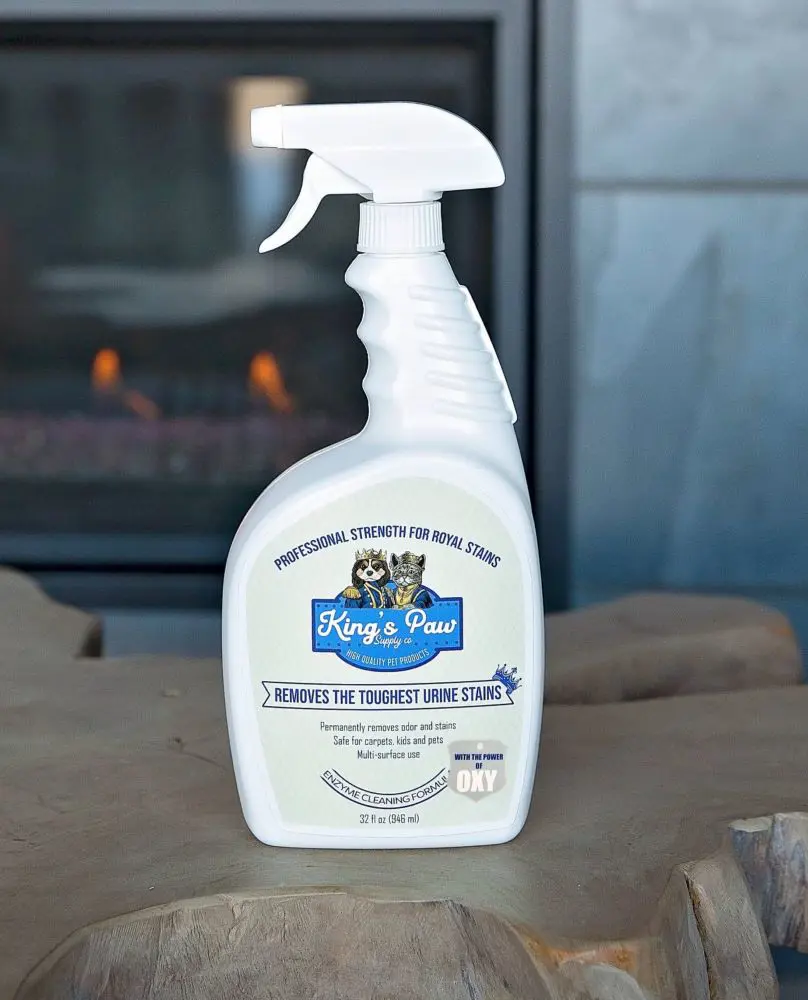
These cleaning products, such as proteases, amylases, and lipases. These enzymes are useful in breaking down organic materials like proteins, starches, and fats.
Additionally, the enzymes effectively target and decompose the components of cat urine, such as uric acid crystals and other odor-causing compounds. Unlike conventional cleaners that mask odors, enzyme cleaners eliminate the source of the smell. The best enzyme cleaners for getting rid of cat pee smell include brands like Nature’s Miracle, Rocco & Roxie, and Simple Solution.
The cleaning process begins with drying up as much urine as possible using paper towels or a clean cloth. This initial step helps to reduce the amount of urine that the cleaner needs to break down. Shake the enzyme cleaner bottle well and then generously spray the affected area, ensuring the cleaner reaches deep into the carpet fibers, upholstery, or fabric.
5. Activated Charcoal Method
Activated charcoal is a form of carbon that has been processed to create a highly porous structure, giving it a large surface area that can effectively trap and absorb odors, chemicals, and toxins. This makes it an excellent natural deodorizer for various applications, including removing cat pee smell.
To use the activated charcoal method, place it near the affected area. You can use activated charcoal in powder form, or in specially designed odor-absorbing bags or pouches.
Simply set the charcoal in a bowl or container, or place the pouches directly on the spot where the odor is strongest. Leave it there for a few hours or overnight to allow it to absorb the smell. While it doesn't clean or remove stains, activated charcoal effectively neutralizes lingering odors.
6. Apply Essential Oils
Essential oils like lavender, eucalyptus, lemon, and tea tree oil are perfect for getting rid of cat urine scent. These oils have natural deodorizing properties that help mask and neutralize unpleasant odors. Their strong, pleasant scents can overpower the pungent smell of cat urine, providing a more pleasant aroma.
To use essential oils for odor removal, mix a few drops of water in a spray bottle and apply it to the affected area. Let it sit for a few minutes, then blot it dry with a clean cloth. While essential oils are effective at masking odors, they are not as effective at removing stains.
For best results, use essential oils in conjunction with other cleaning methods, such as enzyme cleaners or baking soda, to address both the smell and the stain.
7. Lemon Juice Cleaning
Lemon Juice is a rich source of citric acid, a natural compound with powerful deodorizing and antibacterial properties. Citric acid effectively neutralizes strong odors by breaking down the compounds that cause them.
Begin by mixing equal parts lemon juice and water in a spray bottle. Spray the solution generously onto the affected area, ensuring it penetrates deep into the fabric or carpet fibers. Let it sit for 10-15 minutes to allow the citric acid to work on the odor. Afterward, rub the area with a clean cloth to absorb the moisture and any remaining urine.
8. Club Soda Technique
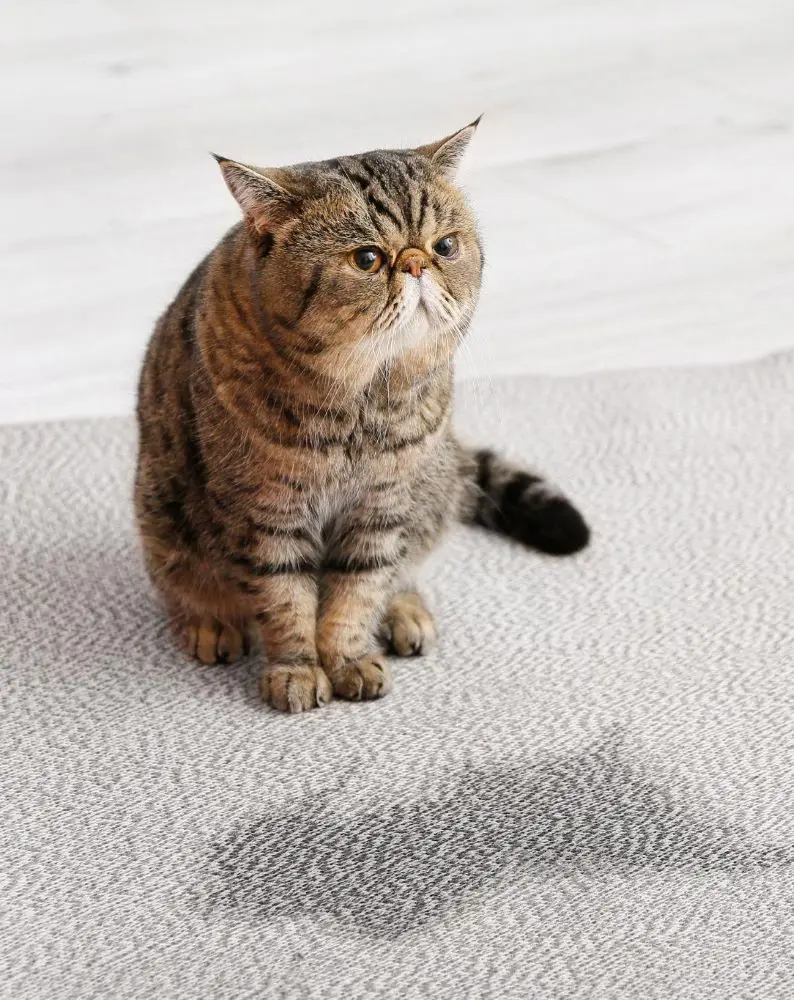
Also called carbonated water, club soda contains minerals like sodium bicarbonate, sodium citrate, and potassium sulfate. These minerals enhance its cleaning properties and establish it as a versatile household cleaner.
When it comes to removing and masking strong smells or odors, club soda is effective due to its effervescence and mineral content. Carbonation helps lift and break down stains and odors, while the minerals can neutralize acidic compounds in the cat's urine.
Commence the cleaning method by cleaning up any excess urine. Next, pour a generous amount of club soda directly onto the affected area. Then, use a clean cloth or sponge to gently dab the area, absorbing the liquid and any dissolved urine. Repeat this process if necessary, particularly for larger or older stains. Once the area looks clean, let it air dry completely. For additional freshness, you can sprinkle a light layer of baking soda over the area after it has dried and vacuum it up after about 15 minutes.
9. Dish Soap And Water Solution
Mix a small amount of mild dish soap with water to create a diluted solution. Avoid using dish soaps with strong fragrances or additives, as these can potentially attract cats back to the area.
Next, apply the dish soap solution directly to the affected area. Gently rub and dab the solution onto the stain, making sure it reaches deep into the carpet fibers or fabric. Allow the solution to sit for a few minutes to break down the urine residue and odor. Then, clean the area again with paper towels or a cloth to absorb excess moisture and soap.
10. Use Borax
Also known as sodium borate, borax is a mineral compound that is widely used as a household cleaner and laundry detergent booster. It is naturally occurring and composed of sodium, boron, oxygen, and water. Borax has several key properties that make it ideal for cleaning tasks: it is alkaline, mildly abrasive, and has disinfecting properties.
As a household cleaner, Borax's alkalinity enhances its ability to break down grease, grime, and stains. It can be used to clean toilets, sinks, and countertops, as well as to remove odors from carpets and upholstery.
11. Commercial Odor Neutralizers
Using commercial neutralizers is a suitable way of dealing with rigid cat smells. These products typically utilize specialized formulas containing enzymes that break down organic compounds like those found in cat urine. Enzymes work by accelerating the natural decomposition process of urine components such as urea and uric acid.
Some popular commercial odor neutralizers include Nature's Miracle Advanced Stain, Odor Eliminator, Simple Solution Extreme Stain, Odor Remover, Angry Orange Pet Odor Eliminator, and more. Follow the product instructions to apply the neutralizer effectively, without wasting these valuable resources.
12. Steam Cleaning
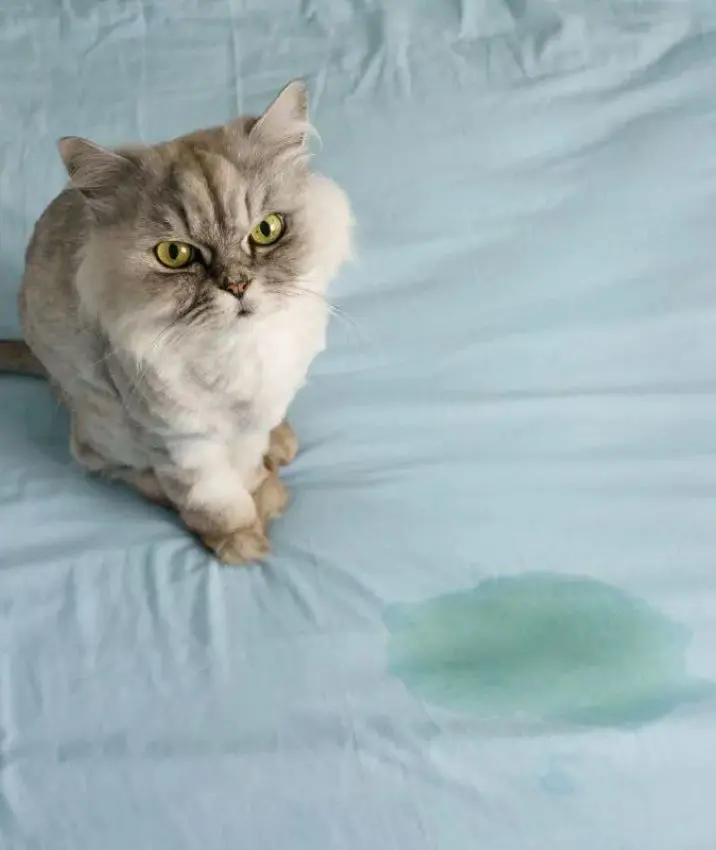
This method can be employed to get rid of cat pee smell from carpets, upholstery, and other surfaces. Firstly, fill your steam cleaner with water and set the appropriate temperature for the material you are cleaning.
Thoroughly vacuum the affected area to remove any loose debris and pet hair. Next, treat the urine stain with a pre-treatment solution designed for pet odors. Allow the pre-treatment solution to sit for a few minutes to absorb the fibers.
Once the pre-treatment has settled, use the steam cleaner to apply hot steam to the area. Move the cleaner slowly over the stained area, ensuring thorough coverage and deep penetration of the steam. The heat and steam help to break down the uric acid crystals and other compounds that cause the odor, while also sanitizing the surface.
13. Ozone Generators
Just as their name suggests, ozone generators are devices that produce ozone (O3), a molecule composed of three oxygen atoms. Ozone is a powerful oxidant and disinfectant that can effectively neutralize odors, kill bacteria, and break down organic compounds.
During the operation, ozone molecules react with odor-causing molecules in the air. This effectively neutralizes them and leaves a fresh-smelling environment. It's important to note that ozone can be harmful to humans and pets if concentrations are too high, so ensure the area is properly ventilated before re-entering.
14. Sunlight
Sunlight Sunlight contains ultraviolet (UV) rays, which have antimicrobial properties. This is used to break down bacteria and organic compounds responsible for odors.
To use sunlight for this purpose, start by thoroughly cleaning the affected item or area. Place the item outdoors in direct sunlight, ideally on a warm and sunny day. The UV rays from the sun will reach deep inside the fabric and help to neutralize the odor over time. Depending on the severity of the odor, leaving the item in sunlight for several hours to a full day can be effective.
15. Vinegar and Baking Soda Combo
Vinegar and baking soda mixture is a highly efficient method of removing cat stains and pee smell due to their complementary properties. Vinegar, specifically white vinegar, is acidic and helps to neutralize alkaline odors. It breaks down the uric acid crystals and ammonia compounds that cause the strong odor.
On the other hand, baking soda is alkaline and acts as a natural deodorizer and mild abrasive. It helps to absorb moisture and odors, further aiding in odor removal and stain lifting.
To apply this method, begin by blotting up any excess urine with paper towels or a cloth. Then, saturate the affected area with white vinegar and let it sit for 5-10 minutes to allow the vinegar to remove the odor. After letting the vinegar and baking soda sit for about 15-20 minutes, gently scrub the area with a soft brush or cloth to work the mixture into the carpet or fabric. Allow it to dry completely, then vacuum up the baking soda residue.
Top Lists
